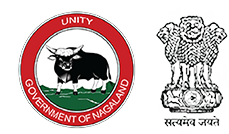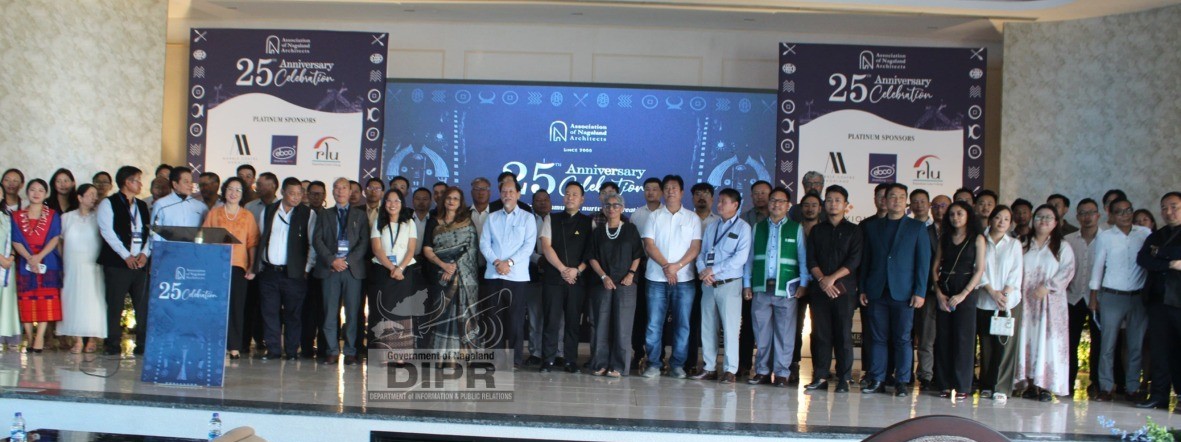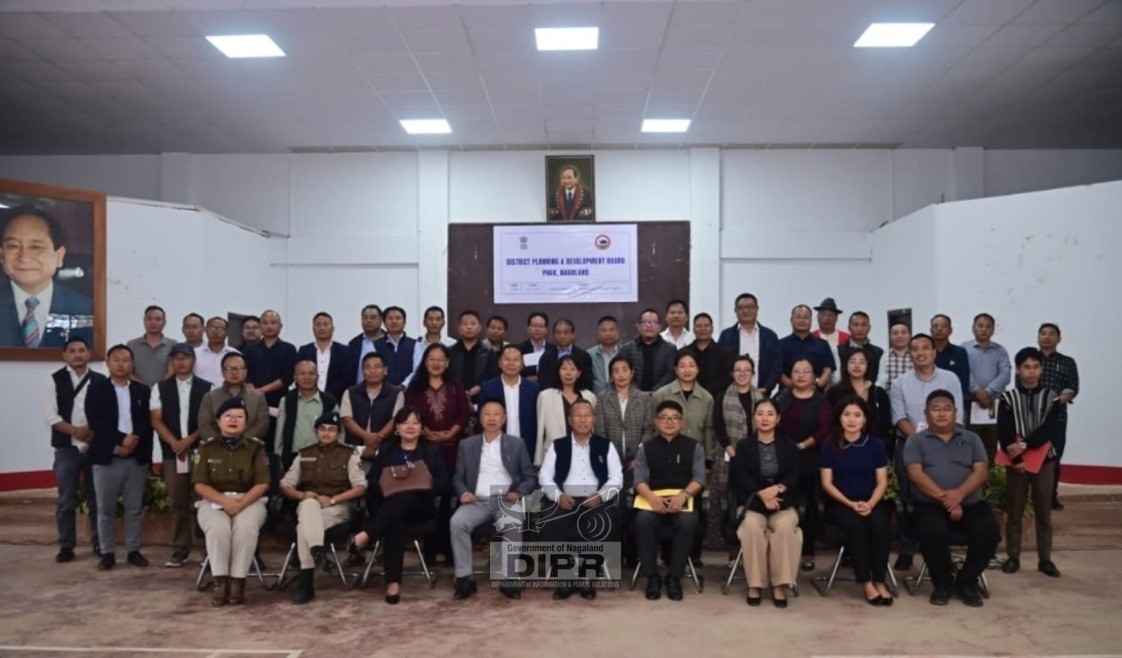Association of Nagaland Architects celebrated its 25th Anniversary under the theme "Celebrating community, nurturing creativity" on 25th October, 2025 at JP Park & Banquets, 4th Mile, Chumoukedima.
On arrival Chief Minister, Dr. Neiphiu Rio opened the exhibition stall, which showcased different materials of homes and decor.
Speaking as a Guest of Honour, Rio, stated that 25 years celebration is a remarkable milestone, a testament to vision, perseverance, and the unwavering commitment of a community of professionals dedicated to shaping the very fabric of our state. He thanked the principal Architect and Founder, Ar. Chitra Vishwanath for his pioneering work at Biome Environmental Solutions in Bangalore which has inspired a generation to build in harmony with nature. He also paid tribute to the genesis of ANA, where they shared not just common concerns, but a common dream to elevate the practice of architecture in Nagaland. One of their earliest and most crucial initiatives was the ardent call for development controls and building bye-laws in our state. This was not just a professional demand; it was a foundational step towards organized, safe, and sustainable urban growth, he added.
Rio mentioned that, from a small but determined group, ANA has blossomed into a robust body of over 120 registered architects, serving as policy makers, government servants, private practitioners, and entrepreneurs. He said that, Architects are more than just designers of buildings; they are the custodians of our heritage, the interpreters of our culture, and the visionaries of our future. Every structure they design, every space they plan, contributes to the identity of Nagaland. They weave the tapestry of our traditional Naga ethos with the threads of modern functionality, creating a built environment that is both unique and relevant. The government of Nagaland deeply acknowledges and values their contributions. Their advocacy for a resilient and sustainable built environment aligns perfectly with our vision for a prosperous and responsible Nagaland, he stated.
Rio, pointed out that we live in Earthquake Zone 5. This is not a statistic in a manual; it is a reality that governs our lives. It demands not just compliance, but ingenuity. It calls upon the architects to be at the forefront of innovation. He urged them to continuously seek and champion new and innovative solutions that are not just aesthetically pleasing, but fundamentally, uncompromisingly safe. Also, the construction sector is the largest engine of employment in our state, providing livelihoods to thousands of our youth, presenting a tremendous economic opportunity. He called upon ANA and its members to take a lead role in encouraging and training our local people. Introduce them to new technologies, modern construction techniques, and sustainable practices. By empowering our local masons, engineers, and artisans, they are not just constructing buildings; they are constructing careers and strengthening our economy, he added.
In conclusion, he encouraged ANA, to carry the same passion, with an even greater sense of purpose, to be the innovators who balance safety with aspiration, the mentors who empower our communities, and the visionaries who build a Nagaland that is not just beautiful, but is resilient, sustainable, and a home we can all be proud of.
Member, Council of Architecture, India, Dr. Gauri Nitin Shiurkar, in her address stated that, Silver Jubilee is not just a celebration of time, it is a celebration of a remarkable journey; a journey of ideas, of people, and of perseverance. It marks the dedication of those who came together with a shared purpose to strengthen the architectural community in Nagaland, nurture young talent, and give voice to the profession in this beautiful and culturally rich state. She pointed out that Nagaland's architecture is a profound reflection of its people, resilient, deeply rooted, and richly expressive. The iconic Naga morungs with their stunning carvings and strong symbolism are more than just buildings; they are living expressions of community, identity, and collective wisdom.
She said that what has always inspired her is the innate sustainability in Naga architecture - the way bamboo, timber, and stone are used so gracefully with deep respect for the climate, the terrain, and traditional craft. Long before the world started talking about green architecture, Nagaland was already practicing it naturally, intuitively, and beautifully. Today, a new generation of architects is reinterpreting these traditions blending the wisdom of the past with the aspirations of the future. This remarkable ability to evolve without losing one's soul is what makes Naga architecture truly special. Nagaland stands today as a living laboratory of sustainable and cultural architecture-place where every building whispers the language of the hills, forests, and people who shape it, she added.
She mentioned that Architecture, at its core, is not simply about constructing buildings - it is about belonging. Every line we draw, every space we shape, should respond to people, to culture, and to the environment. This is something Nagaland's architects have always profoundly understood, their architecture reflects a strong sense of place; it speaks of hills and valleys, forests and community life, craftsmanship and care. Nagas have both an incredible opportunity and a great responsibility to preserve this identity while responding thoughtfully to the modern world. The global community today looks to regions like Nagaland for lessons in contextual and ecological design. You are showing that sustainability does not always come from new technology - sometimes it comes from time-honored tradition.
She stressed on advancing vision through four strategic pillars: Curriculum Reforms; Capacity Building, Digital Integration; and promotion of Sustainable and inclusive Design. We are witnessing a revolution in tools artificial intelligence, virtual modelling, and parametric design are transforming how we work but amidst these rapid changes, remember technology may draw the lines, but humanity gives them meaning.
Our vision also emphasizes reinstating the moral and cultural role of the architect - as a thinker, innovator, and custodian of the built environment. As technology evolves, the COA believes our focus must remain on the essence of design the human experience, she said.
Further, she mentioned that, for Nagaland, the opportunities are vast and inspiring. With the state focusing on eco-tourism, rural development, and infrastructure, architects here can play a pivotal role in shaping the region's future. Nagaland can truly emerge as a beacon of regional and sustainable architecture demonstrating to the world how design can be rooted, relevant, and revolutionary at the same time. She also encouraged the young architect to remember that they are not just building structures; they are shaping human experiences. Use technology wisely, but never let it overpower their imagination. Be innovative, but stay ethical. Dream big, but remain rooted.
Welcome address was delivered by the President, ANA, Ar. Apokla Jamir and a moment in time by Ar. Medozho Zhango. Program highlights included Material Expo, Project work presentations and insights from Eminent Architects. Also panel discussion on- "Licensing and Regulating Construction Workers with a special focus on North East India" was presented. Later, Neiphiu Rio, released Jubilee Magazine and a tribute in remembrance to the First Naga Architect, C. Yantsushan Murry and other Naga Architects.
(Tovikali, IA, Chumoukedima)





